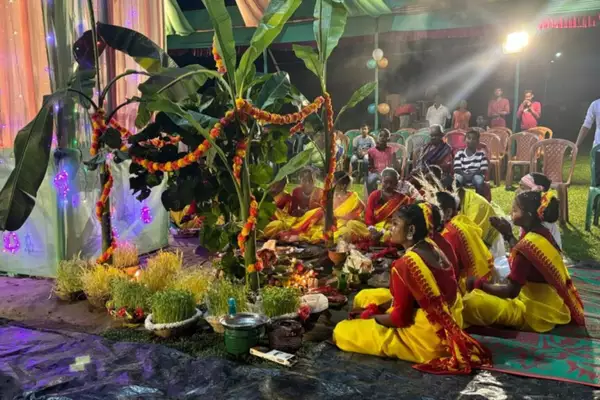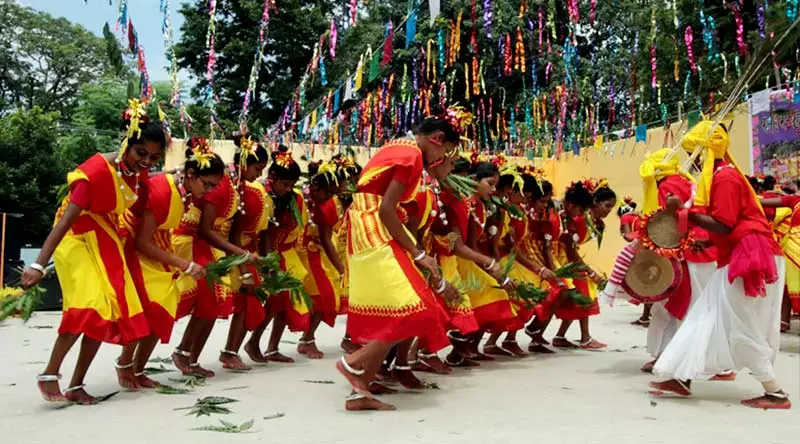The Karam festival, also known as Karma, is one of the biggest celebrations for tribal communities in Jharkhand.
About Karam Festival:
- This vibrant festival honors the Karam tree and symbolizes a deep connection with nature, reflecting the cultural values of unity, respect, and familial bonds.
- The central element of the festival involves worshipping the Karam tree, which symbolizes fertility and prosperity, as tribals pray for a rich harvest during the kharif season.
- In the lead-up to the festival, families clean and decorate their homes with flowers and leaves.
- The evening culminates in the worship of the Karam tree, where girls and women pray for the well-being of their brothers.
- Karma Dancers carry a branch of the Karam tree, which is decorated and raised during the dance, often accompanied by singing and joyous celebrations.
- Unmarried girls celebrate the Jawa festival, which involves songs and dances dedicated to fertility and household prosperity.
- They create baskets with germinating seeds, believing it will enhance crop yield and familial growth.
- Offerings of green melons to the Karam deity symbolize aspirations for abundance.
Ref: Source
| UPSC IAS Preparation Resources | |
| Current Affairs Analysis | Topperspedia |
| GS Shots | Simply Explained |
| Daily Flash Cards | Daily Quiz |
Frequently Asked Question:
What is the Karma Festival?
The Karma Festival, also known as Karam, is a vibrant celebration among tribal communities, symbolizing the deep connection with nature and cultural values of unity, respect, and familial bonds.
What does the Karam tree symbolize?
The Karam tree symbolizes fertility and prosperity, and it is worshipped by tribals who pray for a rich harvest during the kharif season.
What activities take place during the festival?
The festival involves worshipping the Karam tree, dance performances by Karma Dancers carrying a decorated branch, and prayers for the well-being of family members, particularly brothers.



